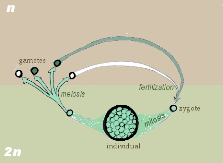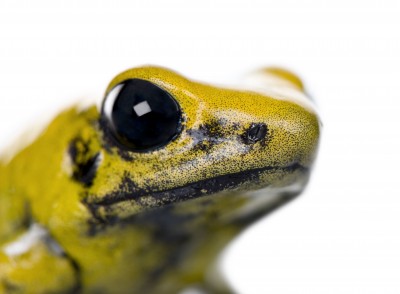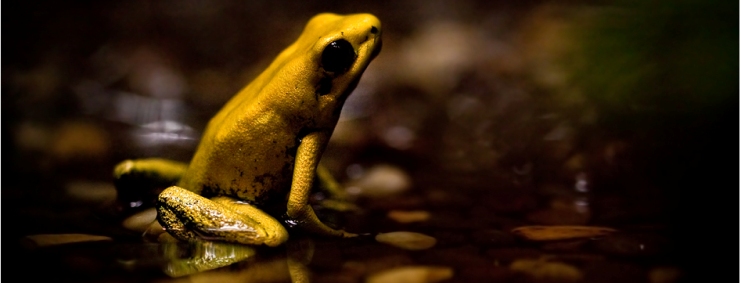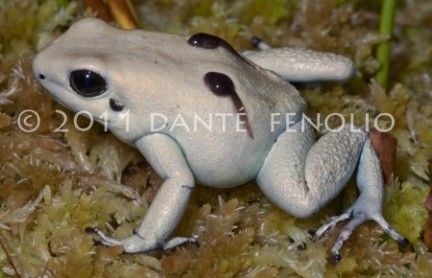Reproduction
Like any other frog they lay their eggs in aquatic
environments. They are also polygynandrous (promiscuous),
meaning that the males and females have several mates. They
perform sexual reproduction in that they fertilize the eggs from
another organism. During the reproductive process the organism
undergoes gametic meiosis in that their reproductive cells
divide via meiosis to form a number of haploid gamete. The
gamete from one frog must meet the gamete of another frog to
form a zygote. The diploid zygote then divides mitotically to
form the new frog.
The males attract the females by
making high-pitched calls also known as a trill. They engage in this courtship by
singing a long trill that last 6 to 7 seconds followed by a
shorter version of the trill. The frequency of this trill is
1800Hz which is a lower frequency compared to the rest of the Dendrobatidae.
They lay clutches of eggs that usually don’t exceed 20 and when
fertilized they don’t hatch more than 11 to 12 days later,
typically taking 2 to 4 days for all to hatch. They are able to
feed on Drosophila
flies only ten days after hatching. They
breed year round and have separate sexes (dioecious). The
fertilization is external and it is usually no more than 55-60 days until
the frogs become
independent.
this courtship by
singing a long trill that last 6 to 7 seconds followed by a
shorter version of the trill. The frequency of this trill is
1800Hz which is a lower frequency compared to the rest of the Dendrobatidae.
They lay clutches of eggs that usually don’t exceed 20 and when
fertilized they don’t hatch more than 11 to 12 days later,
typically taking 2 to 4 days for all to hatch. They are able to
feed on Drosophila
flies only ten days after hatching. They
breed year round and have separate sexes (dioecious). The
fertilization is external and it is usually no more than 55-60 days until
the frogs become
independent.
From this point the frogs take 10-16 months to
reach sexual maturity but the average length is closer to 10
months. The male fertilizes the eggs and attaches them to its back
to get them to the hatching site. After this point there is no further parental
care. Once the eggs have hatched into tadpoles they will stick to the
backs of the male frog and will then be carried up a tree into
the forest canopy. The tadpoles will then be deposited into a
Bromeliad, which is a flowering plant that has its leaves
arranged in a spiral rosette, creating a “water tank” for the
tadpoles to live and thrive in. Many other organisms including
the
Damselfly use these Bromeliads as a safehouse for their
young. A common example of Bromeliads would be the
Pineapple. From there the tadpoles eat
mosquito larvae,
algae and infertile eggs their parents have
left for them.
Photo Courtesy of Dante Fenolio
To visit the Toxicity page click here
For main page click here


